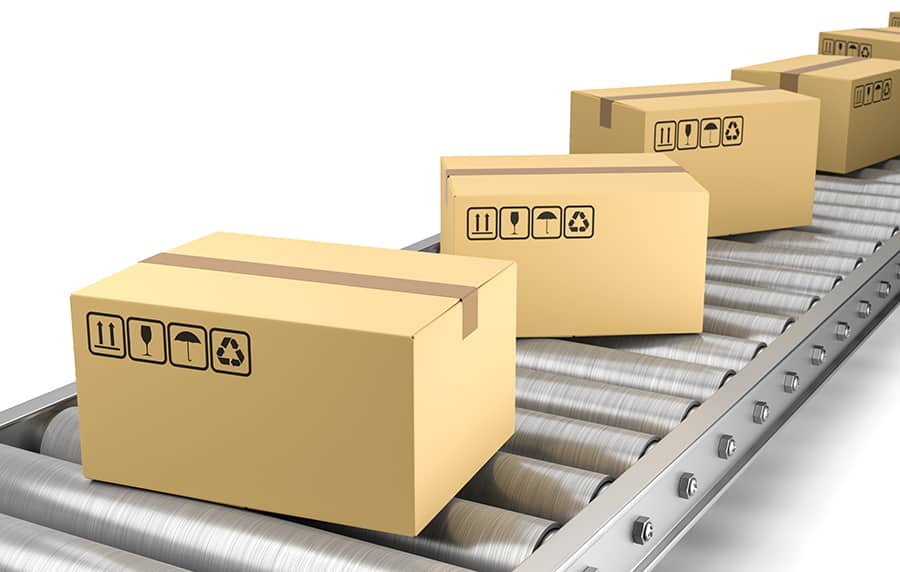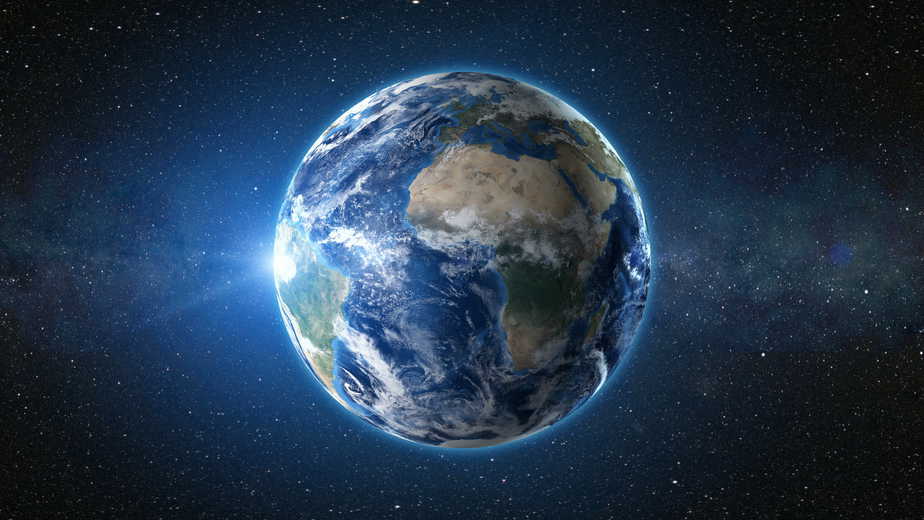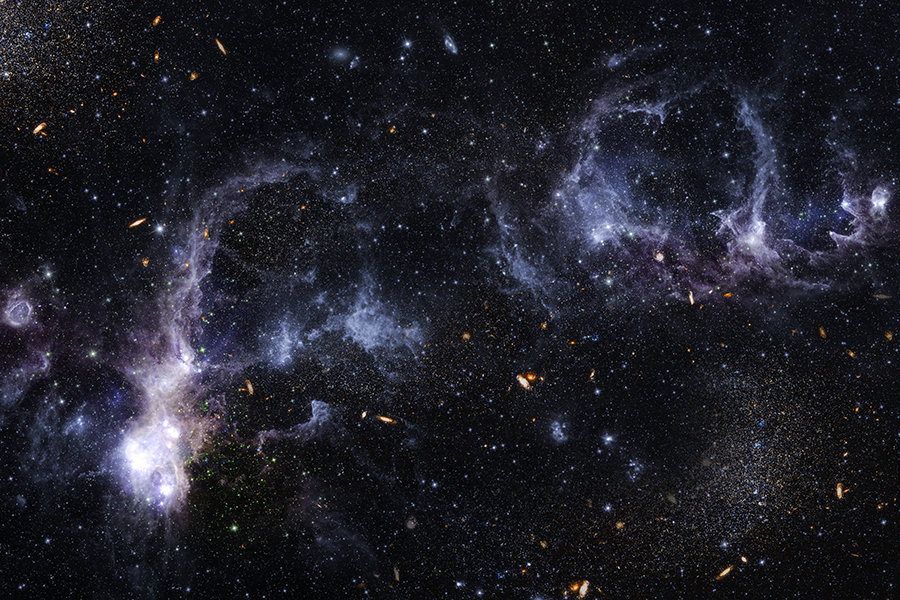Picture a conveyor belt, just like those airport baggage claims, but straight as an arrow. This scene is an analogy of life and our existence.
This analogy struck me as I stood inside a factory, my eyes glued to a bustling conveyor belt. I watched new products tumble onto the belt, journey for a while, and eventually land in a shipping box. A machine sealed the box shut, and it was whisked away from the factory, never to return.
Life’s conveyor belt: A human-sized analogy

This analogy hones in on the birth and death moments in our lives, leaving out the in-between. It doesn’t cover relationships, experiences, or the things we collect along the way. Instead, it offers a simple, bird’s-eye view of human life.
Inside the conveyor belt factory
Picture a factory with a straight, non-stop conveyor belt, moving finished products from one end to the other.
When a new product drops onto the front of the conveyor belt, it symbolizes a human birth.
When a product lands in a packaging box at the end of the conveyor belt, it represents human death.
The factory, home to this conveyor, stands for the habitable part of Earth. As a box leaves the factory after being sealed, it’s like the burial of the deceased. Eventually, the deceased return, recycled into new life. And soon, a new person is born.
The 1977 hit song “Dust in the Wind” by Kansas captures the fleeting nature of life:
Now, don’t hang on
Nothin’ lasts forever but the earth and sky
It slips away
And all your money won’t another minute buy
Dust in the wind
All we are is dust in the wind
Life’s conveyor belt and its edge cases
Imagine the conveyor belt is 100 feet long, with each foot representing one year of human life.
In our analogy, some products will fall off before reaching the end of the 100-foot journey. These fallen products symbolize early human death due to various causes, such as:
- Disease
- Poor health
- Vehicular accident
- Freak accident
- Shooting
- Natural disaster
In the end, all products share the same fate inside a shipping box, no matter what they are. Each product, in its own way, represents a unique mix of:
- Bank account balances
- Owned homes and vehicles
- Physical appearance
- Intellect
- Number of followers
The conveyor belt analogy of life on a solar system scale

Let’s zoom out and redefine the analogy parameters.
Imagine the entire universe is now the factory, with a colossal conveyor belt inside. Instead of humans, this belt moves celestial objects.
We’ll assume the starting point of the conveyor belt is the Big Bang, which happened 13.8 billion years ago.
So, Earth formed roughly 4.5 billion years ago on the conveyor belt. It’ll stay there for another 4 billion years until the Sun becomes a red giant, at which point it’ll drop off the conveyor belt into a shipping box.
Fascinatingly, Earth’s nemesis, the Sun, will share the same fate. It’ll fall into its own shipping box in the next 5 billion years, when it becomes a white dwarf.
Edge case scenarios for Earth’s timeline
There are countless scenarios where products can fall off the conveyor belt earlier than expected. This applies to Earth as well.
To illustrate, we’ll modify our cosmic-scale analogy. The extinction of life on Earth equates to the end of Earth’s journey on the conveyor belt. Some of the following natural disasters could cause Earth to fall off:
- Asteroid impact
- Supervolcano eruption
- Catastrophic climate change
- Powerful coronal mass ejection
- Local gamma-ray burst
The conveyor belt analogy of life at a universal scale

If we continue to scale up our analogy, eventually every celestial object will fall off the conveyor belt.
Planets will meet their end as their stars fade, dropping into cosmic shipping boxes. Stars themselves face one of these fates:
- What dwarf
- Black dwarf
- Neutron star
- Blackhole
As time marches on, the cosmic factory will empty out. The conveyor belt will grind to a halt, devoid of its celestial products, marking the heat death of the universe.

Important Note: Entropy in the universe is always rising. Stars burn through fusion, spreading heat throughout the cosmos. Entropy shows the unavailability of thermal energy for conversion into mechanical work in a closed system like the universe.
Consider how our Sun radiates heat daily. Eventually, its hydrogen fuel will run out, and as it burns through its reserves, its heat will disperse into the vastness of space. This will result in a nearly uniform temperature, with no warmer or cooler objects nearby.
Now, let’s scale up our Sun example to the entire universe. When every star dies, the temperature will become uniform, signaling the heat-death of the universe. This marks the end of its ability to do work, and ultimately, all that will remain is nothingness.

Important Note: Let’s answer why the universe can’t do work.
Picture this: eventually, the universe reaches a state where everything is the same temperature, and everything that could burn has already burned out. This is important because it affects things like heat engines, which convert heat energy into mechanical energy – you know, like the engine in your car.
For a heat engine to work its magic, it needs a temperature difference. It takes a substance from a high temperature to a low one, and that’s what powers the engine. But in a universe where everything’s the same temperature, heat engines simply can’t function.
Poincare recurrence theorem
Now, don’t get too worried – the heat death of the universe is just a theory. Some folks think that as entropy increases, the universe could eventually reach this state. But entropy also represents randomness, so maybe, just maybe, given a crazy long amount of time, the universe might bounce back.
We could see new stars, planets, and even life forms appear, or something totally unexpected could happen. Who knows, right?
Conclusion
I get that this way of thinking about life might not be everyone’s jam. It can be kind of a bummer and even trigger an existential crisis for some people. But recognizing this idea is important because it helps us grasp the unpredictability and randomness of life.
Oddly enough, I find it comforting. That’s why I love staring up at the night sky and remembering that everything has an end. It makes me appreciate the time I have on this “conveyor belt” of life, focusing on what truly matters to me. Because once you fall off that conveyor belt, you’re out of the factory for good.
What are your thoughts on the conveyor belt analogy of life? Got any other analogies that help you make sense of life?

I came up with an essay on comparing the universe to a cosmic warehouse after time working as a package handler for FedEx and after I made it I eventually searched in Google “the universe is like a conveyor belt” and came upon this article! Mine suggests some ideas for dark matter and dark energy and their role within the cosmic warehouse that might be intriguing to you idk. If you would like to read my essay, I would love to send an email to you to get some feedback
Sounds intriguing. I will definitely check it out and let you know what I think.
As a Christian and as an engineer, I have been thinking a lot about life and death questions. Many times, I feel we are all on this giant conveyor belt, where we are strongly influenced by our habits and drifting down the conveyor belt without any course correction. Many times we have no idea where the conveyor belt is leading us. Over our life span, there are some critical moments when we can or we are influenced by some life event strongly enough to switch to a different conveyor belt heading to a different destination. From the faith perspective, most of the people are heading straight to Hell without even realizing it. On the other hand, everyone on this giant conveyor belt heading to Hell does have the choice to get off that conveyor belt and get on a conveyor belt heading to Heaven with conscious efforts and God’s grace.
Not sure what happened. My comments just got posted. I’m very glad that I found this article on the conveyor belt analogy though the conveyor belt analogy that I have been thinking about is slightly different. See the comment before for more details.
I think about it a lot myself, too. It’s an analogy that has helped me better conceptualize life.